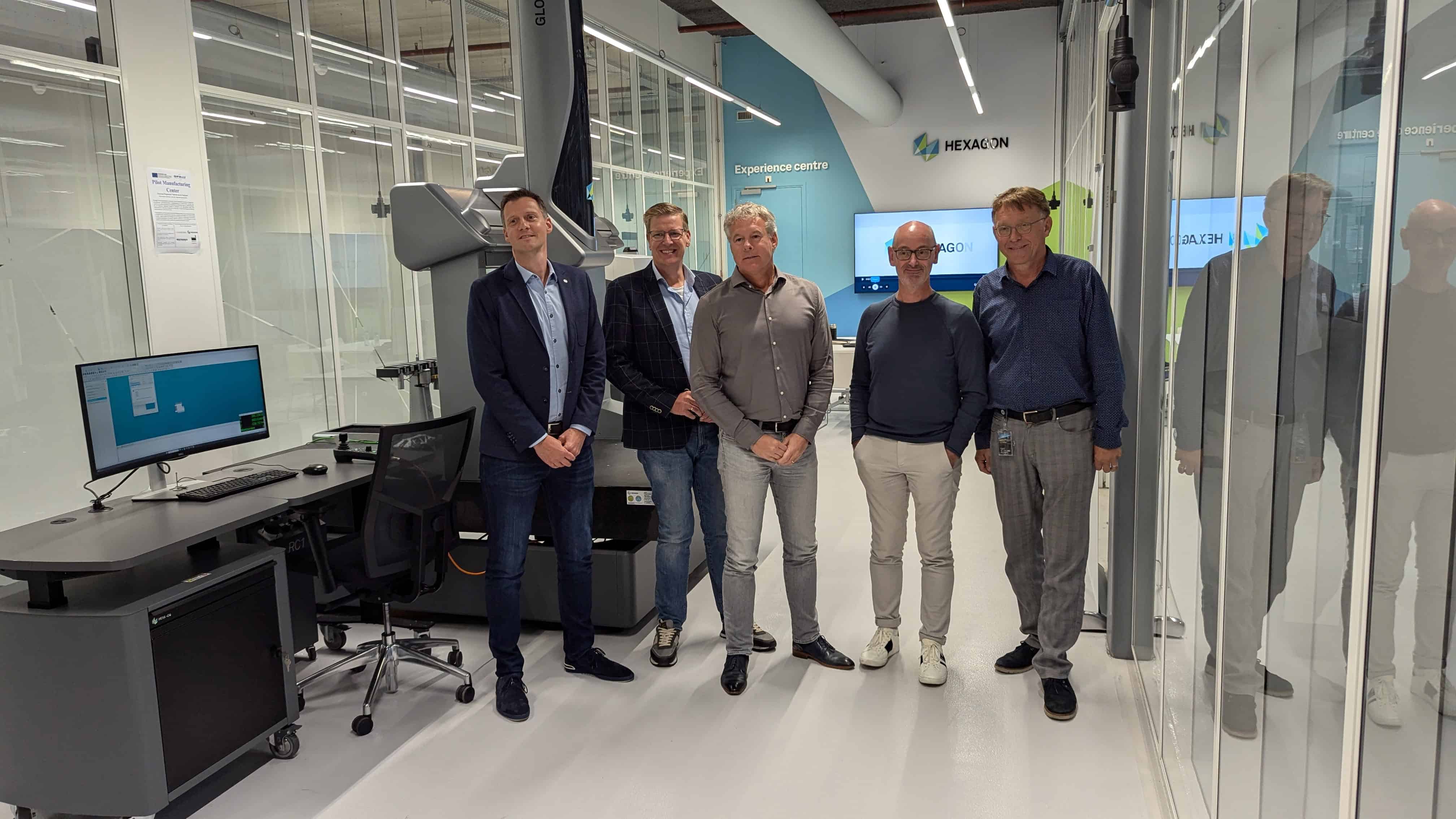
That geopolitics is a subject as sensitive as it is dynamic is something we see in the news every day. An alliance that seemed ideal yesterday may already be completely undesirable tomorrow. How do we keep things in balance as a continent, as a country, or even as a region? How do companies deal with this? To find out, Dr. Yuxi Nie puts the magnifying glass on the relationship between Brainport Eindhoven – which, as a high-tech region, is extremely sensitive to the consequences of geopolitics – and China. In a series of articles, she keeps us informed of the progress of her research, which aims to devise effective communication strategies for Brainport. Today, part 1. Read the whole series here
Business relations between China and the EU have come under a lot of pressure. Gone are the (short-lived) days when every self-assured European company needed to find their clients in China and globalization seemed to be the answer to every expansionist ambition. In just a couple of years, we have become aware that geopolitics is not restricted to the debates among the G7 heads-of-state, but also has been brought to the attention of entrepreneurs, companies, and CEOs. The game of international relations is affecting and will continue to shape the ways of doing business.
We can see the impact in the headlines every day, on both international and local levels. Take the Eindhovens Dagblad, reporting in January 2020, that “400 years of cooperation between China and the Netherlands are under pressure now that ASML does not receive an export license”. It was not a local story. All over the world, news outlets picked up on the geopolitical tension among China, the US, and the Netherlands. While ASML seemed to respond laconic, there were certainly deep concerns behind the scene.
“If for whatever reason we’re not allowed to sell EUV systems to China, another company will jump in to satisfy the demand. We’ll just ship to that company. It doesn’t matter to us where the chips are manufactured”
Peter Wennink, CEO ASML, 2020
What was going on? ASML needs a license from the Dutch government to ship its latest EUV scanners to China. The US transitional Trump administration was concerned that these machines could be used for both civilian and military applications, and compelled the Dutch government not to grant ASML an export license. As a result, the license to ship the equipment has been held back – and still is. The Chinese Ambassador in the Netherlands in turn implied that if the Netherlands “is politicizing trade relationship under American pressure,” it would “negatively affect bilateral relations”. In light of the remarks, the Dutch Foreign Ministry spokesperson responded in an e-mailed statement that the Dutch government “weighs both the economic and security interests” when deciding whether to issue an export license.
This example unfolds the ongoing geopolitical tension and its potent influence on Sino-Dutch business relations. The challenge of managing these geopolitical and intercultural relationships is not restricted to ASML. Amid the tit for tat tariff measures between China and the US, Philips is also affected in their business relations with Chinese suppliers. As Brouwers and Krijger point out, Sixty-eight Chinese companies being blacklisted by the US caused notable consequences for Dutch business and government.
Geopolitical factors are mixing business with politics. Business entrepreneurs are witnessing the increasingly politicized international economic relations caused by the rise in new economic powers outside the Northern American and Western European countries and the tensions among the global military powers including the US, Russia, and China. For instance, ChemChina’s $43 billion takeover of Swiss Syngenta in 2017 has prompted a call within the US senate to adjust its policies on foreign acquisitions. While advanced technologies are regarded by governments as potent sources of geopolitical power, international mergers and acquisitions are no longer “business as usual”.
Between Brainport and Chinese partners
For the Dutch organizations, both the multinationals like ASML and Philips are situated in Brainport Eindhoven, in the province of Brabant. Brainport Eindhoven plays a significant role in the global tech arena, consisting of hundreds of companies with high private R&D investments and innovation startups as well as research institutes whose technological access could be of great global economic and political interest. Some of these organizations, including Anteryon, NXP, Ampleon, and Sioux Technology have growing business relationships with China. For this reason, the Chinese state regards Brainport as an important business partner in its industrial policy Made-in-China 2025 and a strategic hub in China’s diplomatic policy Belt and Road Initiative (BRI).
The question is, in terms of business communications with the Chinese partners from different scales, is there a marked difference between the large multinationals and the small and medium-sized enterprises (SMEs)?
The multinationals cope with the increased pressure amid the decoupling from China. In the decision-making, they may take into account that their public responses towards China are untenable to the geopolitical flux of international relations. To confront the geopolitical challenge, several policies and strategies come into play, including the EU-China Comprehensive Agreement on Investment (CAI) and the EU framework for the screening of foreign direct investment (FDI). Even though the CAI is far from comprehensive and establishing templates for screening does not necessarily translate to a “one size fits all” approach, they do push organizations to take mindful considerations in their decision-making process.
Opportunities and issues
For SMEs, it’s different. They are mostly dealing at provincial levels with Chinese business. The Brabant province has close ties with China’s Jiangsu province. Both sides have been working on strengthening business and cultural activities even against the adversities of Covid-19 restrictions. Recent achievements include the business center in Suzhou, Sino-Dutch High Tech Innovation Port, which involves many organizations from Brainport, and the joint research program between the Holst Center in Eindhoven and Nanjing Tech University (NTU).
Even though for the SMEs, dealing with Chinese businesses at provincial levels allows more space to maneuver communication through establishing long-term networks and personal relationships, it is not entirely free of geopolitical concerns at the moment. So how can we conceptualize the Sino-Dutch business communications at the provincial level? And where lies the dilemma? On the one hand, from the business point of view, in regard to the interactions with Chinese businesses at the provincial level, the Dutch organizations still see China as an exciting opportunity for expanding their business and collaborations. As the Sioux director Hans Duisters in his interview responses, he prefers to make contact with people and make things work with companies instead of looking at countries. On the other hand, it has been raised that in the coming years even provincial actors would increasingly face issues on which national-level advice is necessary. Can we find adapted solutions for the Brainport SMEs?
No one-size-fits-all solutions
Recommendations have been suggested by China experts that Dutch organizations would benefit from prioritizing their values, economic goals, and security concerns. Sharing experiences among peers about doing business with Chinese partners, embracing tailor-made business support, and obtaining knowledge of Chinese culture will help the Dutch entrepreneurs to achieve long-term prosperity and maintain sustainable relations with their counterparts.
In his analysis of managing international business in China, Tian has grouped different communication strategies (problem-solving strategy, compromising strategy, forcing strategy, and legalistic strategy) into two broad approaches to conflict resolution: soft-line approaches and hard-line approaches. With a more personal touch, the soft-line approach refers to resolving conflict “through compromise, open and friendly negotiation, and reasoned argument and persuasion”. Conversely, the hard-line approach suggests reinforcing one’s will by “having recourse to the law, and resolves conflicts through noncompromising confrontation”.
So how does an organization choose its approach? It depends on the factors of cultural similarities, the relative power of the partners, and the age of the relationship. An organization prefers to adopt a soft-line approach when it shares more cultural similarities and/or has established a longer relationship with its Chinese partners. An organization that holds “the key resources for the success of the alliance”, which translates to greater power, is more likely to adopt a hard-line approach, says Tian. Nevertheless, the reality is not black and white and negotiators often strike a balance between the two approaches. In practice, organizations alternate their approaches and make impromptu adjustments when it comes to particular cases.
To form tailored, consistent, and adapted communication strategies, organizations first need to go back to the basics and re-define the “China” they are dealing with. It helps to understand its many more faces through political, economic, and cultural perspectives, as Andrew Collier argues, “there is no “China” that is behind a transaction. It’s a melting pot of competing interests. Many of these deals are the result of intense jockeying between a number of corporate, governmental, and financial institutions, each with their own agenda”.
Dr. Yuxi Nie is a researcher-lecturer at Fontys University of Applied Sciences, executing the research project “Towards a communicative strategy that guides Brainport companies to do business with China in a growing digital business context”. Business relations between Brainport organizations and their partners based in China have been growing rapidly. Probing the geo-political, intercultural and digital challenges, this project explores the Sino-Dutch corporate communicative strategies and aims to develop effective communication strategies for organizations in Brainport. This two-year Hbo-postdoc project started in 2022 and is funded by Regieorgaan SIA, part of NWO, the Dutch Research Council.








